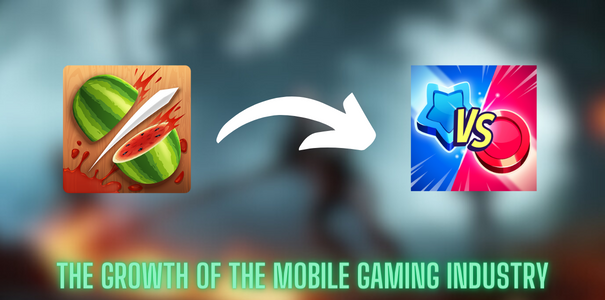
The Growth of the Mobile Gaming Industry: A Digital Revolution
Affiliate Marketing・3 min read
The mobile gaming industry has experienced a monumental surge in recent years, transforming the way people consume and interact with video games. With the proliferation of smartphones and the constant advancements in technology, mobile gaming has become a global phenomenon, captivating audiences of all ages and demographics. This article delves into the remarkable growth of the mobile gaming industry, exploring the key factors driving its success, the evolving landscape of mobile gaming, and the future potential it holds.
Ubiquity of Mobile Devices.
The widespread adoption of smartphones has been instrumental in the explosive growth of the mobile gaming industry. Mobile devices have become an essential part of people's lives, providing instant access to a diverse range of gaming experiences. With powerful processors, high-resolution displays, and intuitive touch interfaces, smartphones have bridged the gap between casual and immersive gaming. The portability and convenience offered by mobile devices have made gaming more accessible than ever, attracting a massive user base globally.
Evolving Gaming Experiences
Mobile gaming has come a long way from simple puzzles and arcade games. Today, developers are pushing boundaries, delivering high-quality, console-like experiences on mobile platforms. The availability of advanced graphics, immersive soundscapes, and multiplayer capabilities has elevated the mobile gaming experience to new heights. From action-packed shooters to expansive role-playing games and strategic multiplayer battles, mobile gaming offers a diverse range of genres, catering to a wide spectrum of player preferences.
Accessibility and Free-to-Play Model
The accessibility and affordability of mobile gaming have played a significant role in its rapid growth. Many mobile games follow a free-to-play model, allowing users to download and play games without upfront costs. This model, supported by in-app purchases and advertisements, has proven to be lucrative for developers while providing users with the freedom to engage with games at their own pace. The low barrier to entry encourages a larger player base, including individuals who may not have previously considered themselves gamers.
Social Connectivity and Competitive Play
Mobile gaming has embraced social connectivity, enabling players to engage with friends and communities in real-time. Multiplayer modes and social features have transformed mobile gaming into a social experience, allowing players to collaborate, compete, and connect with others globally. The rise of esports and mobile gaming tournaments has further amplified the competitive aspect, enticing players to improve their skills and engage in friendly or competitive competitions. The ability to share achievements, challenges, and gameplay experiences across social media platforms has fostered a sense of community and camaraderie among mobile gamers.
Monetization and Industry Revenue
The monetization potential of the mobile gaming industry is staggering. In-app purchases, subscriptions, and advertisements have become lucrative revenue streams for developers. The freemium model, where games are initially free to download but offer optional in-game purchases, has become prevalent. Additionally, the rise of mobile gaming influencers and content creators has created new avenues for brand partnerships, sponsorships, and monetization opportunities within the industry. As a result, the mobile gaming industry has witnessed substantial revenue growth, outpacing traditional gaming platforms.
Future Trends and Opportunities
The future of the mobile gaming industry looks promising, with several trends and opportunities on the horizon. Advancements in augmented reality (AR) and virtual reality (VR) technologies hold the potential to revolutionize mobile gaming by providing more immersive and interactive experiences. Furthermore, cloud gaming platforms are gaining traction, allowing players to access high-end games on mobile devices without the need for expensive hardware. The integration of blockchain and cryptocurrency in gaming also presents exciting prospects, offering decentralized and secure ecosystems for in-game transactions and ownership.
Conclusion
The growth of the mobile gaming industry has been nothing short of remarkable. Mobile devices have transformed into powerful gaming platforms, offering immersive experiences, social connectivity, and diverse genres to a global audience. With accessibility, evolving technologies, and innovative monetization models, mobile gaming has become a dominant force in the gaming landscape. As the industry continues to evolve and embrace emerging technologies, the future holds endless possibilities for mobile gaming, cementing its position as a major player in the digital entertainment realm.



